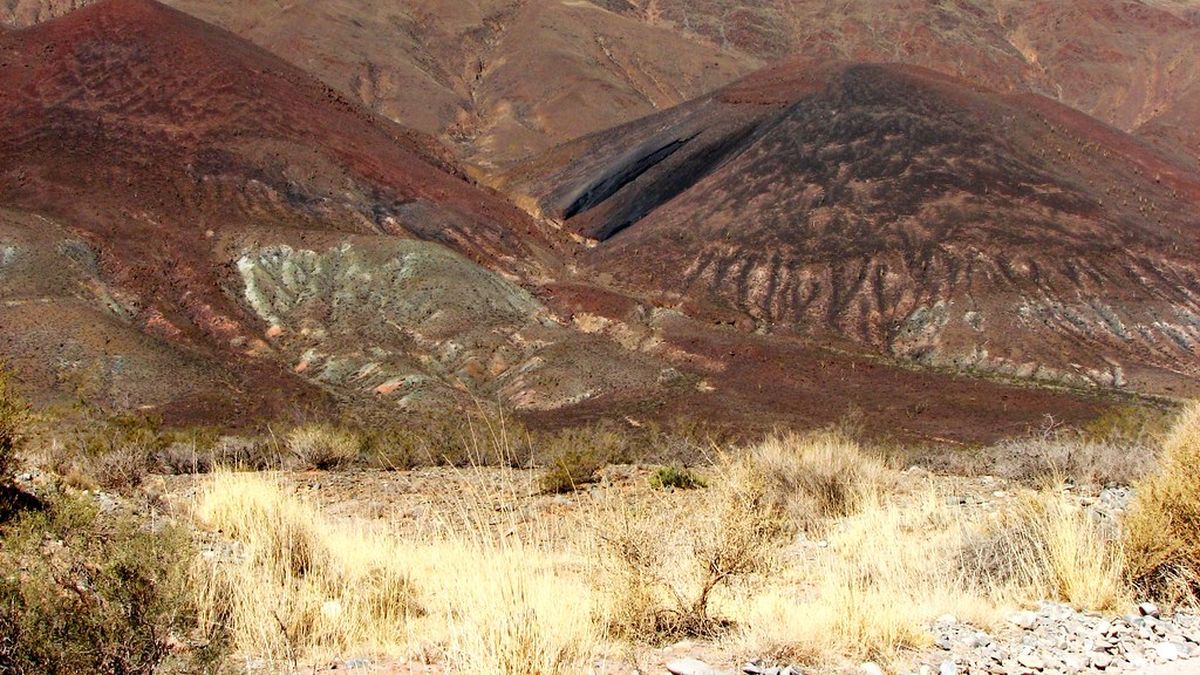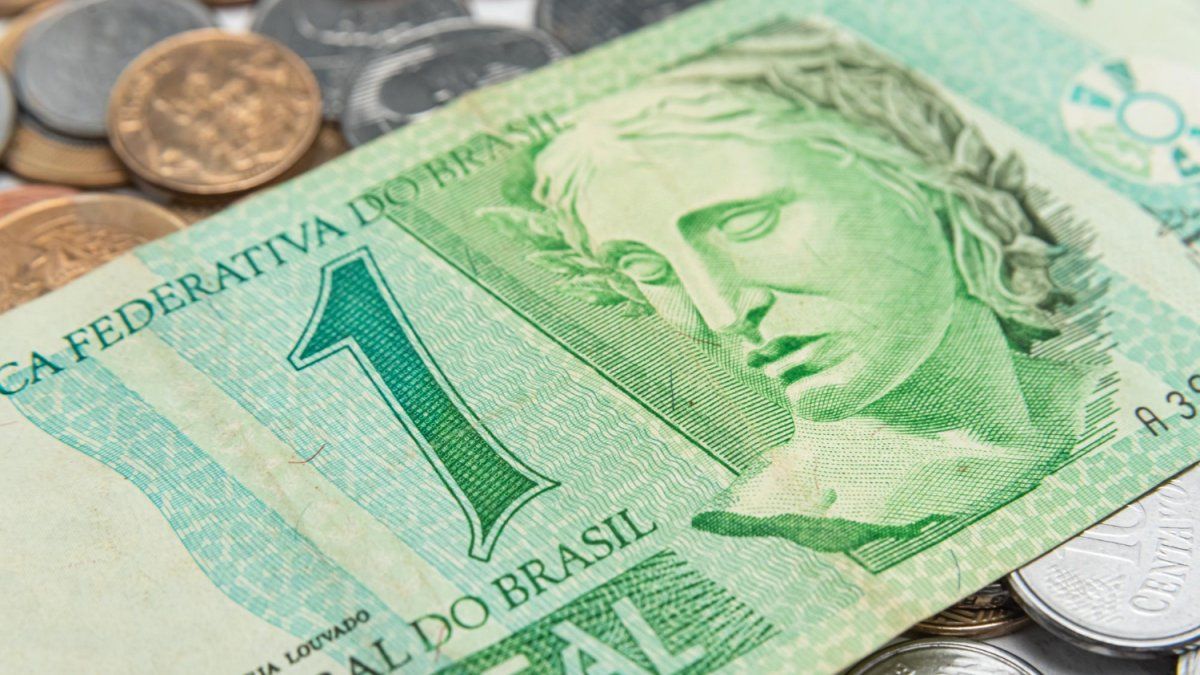Winding ravines, colorful peaks, mountain ranges full of cardons and an increasingly blue sky, lead the route from Salta to The PomaThe Devil’s Bridge, a volcano with two chimneys and Los Graneros, a World Heritage Site, are some of the natural treasures of the town located at more than 3,000 meters above sea level.
Its name comes from the Quechua word puma, which was used to designate the ferocious felines of the same name that lived in the area. However, another version says that the name originated from pumice stone, due to the place where it is found, a volcanic region where this material is abundant.
The village It was destroyed by an earthquake in 1930, After this, the town was rebuilt 1 km from the original. Today, you can visit La Poma Vieja and see the ruins of houses and other buildings.
Nazarene Salta 1.jpg
What to do in La Poma, Salta
Patronal Festival of Santa Barbara
On the fourth Sunday of November, La Poma prepares to celebrate the festivities in honor of its patron saint Santa Barbara, protector of the faithful during storms.
Trout Festival
This festival is not to be missed in Januaryl, which brings together a large number of spectators who come to enjoy artists of provincial and national renown, as well as the different preparations of this exquisite delicacy, which also includes empanadas, goat, locro, lamb baked in a clay oven and goat cheese. You can also taste typical drinks from the area such as chicha.
Eulogia Tapia and the zamba “La Pomeña”
The people are the owners of one of the most beautiful folk songs that Salta has given to the country and the world.The girl who inspired the poets Castilla and Leguizamón lived in these lands and, today, it is possible to see her still taking her goats to graze, in the middle of the immensity of the hills.
Local gastronomy
Trout is the specialty This region is known for its meat, which has a unique flavour, thanks to the crystal-clear and pure waters that melt from the Acay River and flow through mountains and caves. You cannot miss the chanfaina criolla, an old recipe that uses the blood and offal of goats and lamb. The goats and lamb cooked in a clay oven, accompanied by beans, corn and Andean potatoes, which characterise the artisanal cuisine of Poma, are another dish you cannot miss.
The Granaries of La Poma
Built in a natural cave, lThe Graneros de La Poma are one of the main vestiges of ancestral culture in the Northwest of Argentina, declared a World Heritage Site by UNESCO, together with two other sites in Salta, they were part of the Qhapaq Ñan or Inca Trail. There are 25 circular and rectangular silos; they were mainly used to store corn. The clay installation is complex, since it contains the modern principles of ventilation and rodent protection that are still in force. The site is located 500 meters from the route, protected by a fence and with good signage for its preservation.
The Twins Volcano
Two volcanoes are the guardians of the town of La Poma. A huge “black field” of pumice belonging to eruptions in the past, it adorns the landscape and invites you to climb them. The pleasure of reaching the summit and being able to see the beautiful panoramic view is an unmissable activity in the place.
Devil’s Bridge
This cavern, a very curious geological phenomenon worth seeing, It contains stalactites of various shapes and sizes inside, which frame the stream of water that flows inside.. Since this is not a self-guided tour, it is suggested that you hire authorized agencies to visit the site in the company of professional guides.
High altitude trekking
It is possible to hike through these beautiful landscapes of the Calchaquí Valley, passing through La Poma and its incredible formations such as the Devil’s Bridge and the underground caverns.
The Abra del Acay Natural Monument
Protected area that houses impressive natural landscapesa place where camelids such as the vicuña and the guanaco coexist. It is crossed by an incredible road pass that, at almost 5,000 meters, links the Puna with the Calchaquí Valleys, a little more than 40 km north of the town of La Poma.
Mountain biking and 4×4 tours on National Route No. 40 and Abra del Acay
For adrenaline lovers and those who love beautiful scenery, these activities are a must. From Salta you can climb the Quebrada del Toro up to National Route 40, and then up to the highest road pass in America: the “Abra del Acay”, with its 5,000 meters of altitude. From here you start a descent towards the town of La Poma. Along the way you can see some natural wonders such as the Devil’s Bridge and traces of ancient cultures such as the granaries of La Poma.
Snow-capped mountains of Acay, Santa Barbara and San Miguel
They are incredible massifs over 5,000 metres highwhere the imposing landscape and what you see during the ascent are unforgettable; these are strategic points for mountaineering in the region. As this is not a self-guided tour, it is suggested that you hire agencies authorised to tour the area accompanied by professional guides.
Calchaqui River
The Calchaquí River has its source in the Nevado del Acay and it is in this area where you can find fresh trout to the delight of lovers of this species.
Festival of the copla
August is the month of Pachamama and coplaThis ancestral song brings together copleros from different parts of the province, with its excellent host: Eulogia Tapia, emblem and living cultural heritage of La Poma.
This cultural event highlights the warmth of the people, the regional food and the Pachamama ritual.
Large Salt Flats
Shared by Jujuy and Salta (La Poma department), this salt flat presents a fascinating setting as you walk through the white, silent and sublime immensity that contrasts with the blue sky, as well as the shades of the clouds.
It is one of the best-known salt flats in Argentina, and is located 65 km north of San Antonio de Los Cobres.accessed via National Route No. 40.
How to get to La Poma, Salta
La Poma is located on Route 40, which runs through the country from north to south. The easiest way to get there is to cross the Cuesta del Obispo and take the route from the town of Payogasta.
From San Antonio de los Cobres (to the north) you can get there via Route 40 crossing the Abra de Acay, this road is not always open and it is recommended to check its status.
Buses and buses run from Salta, operated by Ale Hermanos (6 hours) on Tuesdays, Thursdays, Saturdays and Sundays. The buses leave from the city’s bus terminal and pass through the towns of Payogasta and Cachi.
Source: Ambito
I am an author and journalist who has worked in the entertainment industry for over a decade. I currently work as a news editor at a major news website, and my focus is on covering the latest trends in entertainment. I also write occasional pieces for other outlets, and have authored two books about the entertainment industry.




